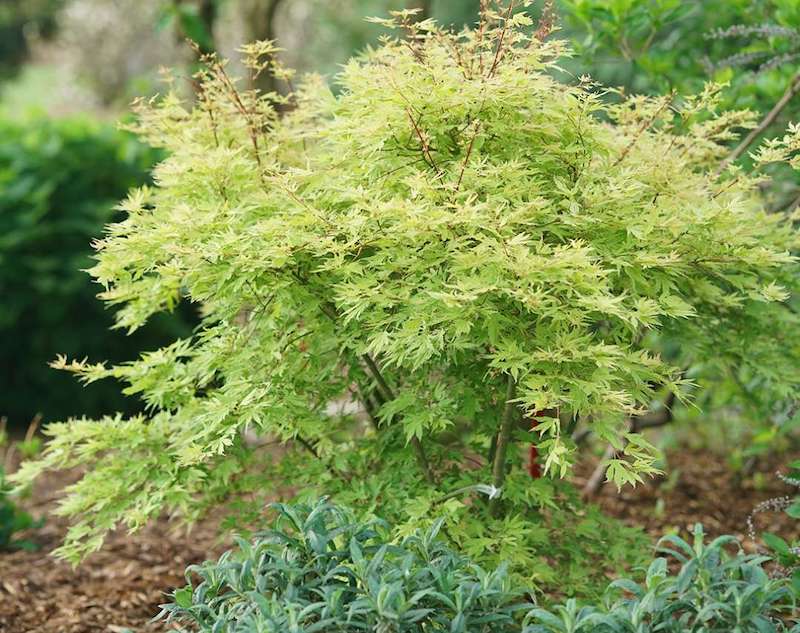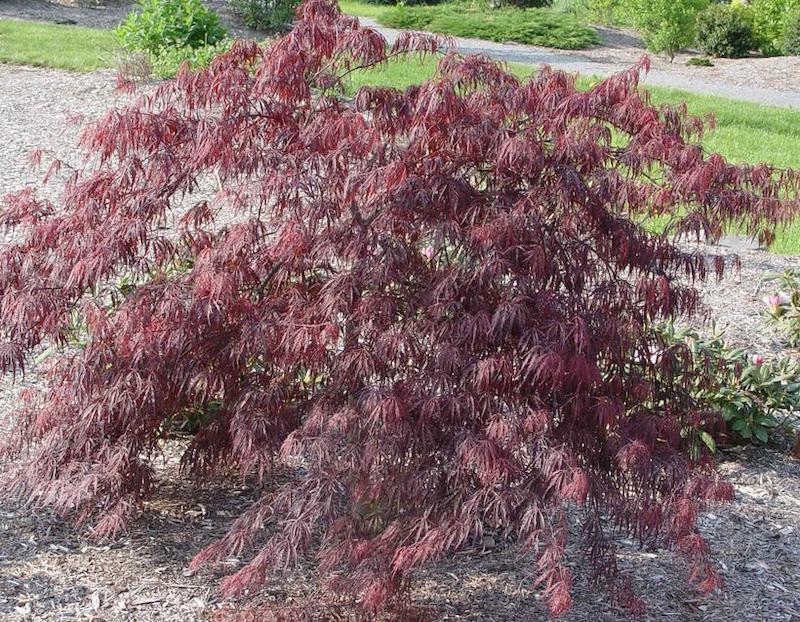Japanese maples are well-known trees that are suited for practically any landscape. Known as Acer palmatum, these graceful trees are popular for their compact growth and interesting branch structure, with variable leaves in shades of red, purple, and green. Japanese maples make great focal, structural plants in the garden, and should ideally be planted in a location where they can grow for years. If you are hoping to add Japanese maples to your garden, this article will cover the correct way to plant these easy-to-grow trees.

What You Need To Plant Japanese Maples
- Shovel or spade
- Compost or other sources of organic matter
- Water source
- Wood-based mulch
Where to Plant Japanese Maples
Japanese maples should be planted in well-drained soil with a slightly acidic to neutral pH. The soil should have organic matter, or some will need to be added at planting time. Japanese maples cannot be planted in heavy, clay soils or low-lying areas, as excessive moisture can lead to rot.
These trees are tolerant of full sun or shade but grow best when they receive morning sun and afternoon shade. Keep in mind that too much sun may cause burning of the leaf margins and early leaf drop, so only plant Japanese maples in full sun if they can be kept consistently moist and protected from drying winds. For red-leaved Japanese maples, too much shade may result in greening of the leaves. To maintain a vibrant red leaf color, plant red-leaved Japanese maples in a sunnier location. Plant Japanese maples in a protected location, as the softwood growth of these trees is very susceptible to breakage from wind.
Japanese Maple Spacing
Proper spacing is needed to ensure adequate air circulation and healthy growth. Japanese maples are relatively slow-growing plants. These trees will rarely exceed 25-30 feet in height and spread, with dwarf varieties growing to just 2-4 feet. Space Japanese maples anywhere from 6-20 feet apart, depending on the cultivar and mature spread of the tree. Japanese maples are best planted away from driveways and walkways, as their shallow roots can damage concrete.

Steps To Plant Japanese Maples
Step 1 - Remove the Japanese maple from its pot. If the tree is balled and burlapped, fully remove the twine, wire, and cloth covering the root ball.
Step 2 - Using a shovel or spade, dig a hole that is about 2-3 times as wide as the root ball, and deep enough so that the tree’s collar is not buried in the soil. The collar is the flared area where the roots meet the trunk.
Step 3 - Put the tree into the hole, and fill it with native soil.
Step 4 - Water the newly planted Japanese maple well, concentrating the water around the root ball. This will help the soil settle while reducing the effects of transplant shock.
Step 5 - Apply a 3-4 inch layer of wood-based mulch evenly above the root system to conserve soil moisture. Avoid piling mulch against the tree’s trunk, as this will lead to rot.
Step 6 - If desired, weeping varieties of Japanese maples can be staked after planting. This can help the tree to grow into an upright, tiered form. To stake your Japanese maple, insert stakes into the ground about 1-2 feet from the plant’s root ball. Wrap the stakes with soft rope or canvas strapping, avoiding contact with the trunk.
Step 7 - To encourage healthy root establishment, avoid fertilizing newly planted Japanese maples. Wait until at least the second growing season after planting to fertilize.
When to Plant Japanese Maples
The best time of the year to plant Japanese maples is early spring, which allows sufficient time for roots to develop before winter. To reduce stress to the Japanese maple, plant it in the morning. If early spring has passed, fall is another good time to plant. Make sure to plant earlier in fall since late fall frosts can damage or kill unestablished Japanese maples. Avoid planting Japanese maples in winter when the ground is frozen as well as in summer when heat and intense sunlight can worsen transplant shock.
Transplanting Japanese Maples
Japanese maples take well to transplanting when needed, such as when moving them to a better location to grow. It is especially easy to do for smaller varieties or while the plants are young. Bigger, more established Japanese maples may be difficult to transplant without specialized equipment. To transplant Japanese maples, start digging around the tree’s root system, keeping as much of the roots intact as possible, until the plant can be fully taken out of the ground. When moving the Japanese maple, try to keep a good portion of the original soil around the roots to reduce transplant shock. Plant the tree in a suitable location. Water and mulch well after transplanting. Japanese maples should be transplanted in the morning in early spring or early fall.
 |
Lauren Youngcourt - Published 04-27-2023 |
